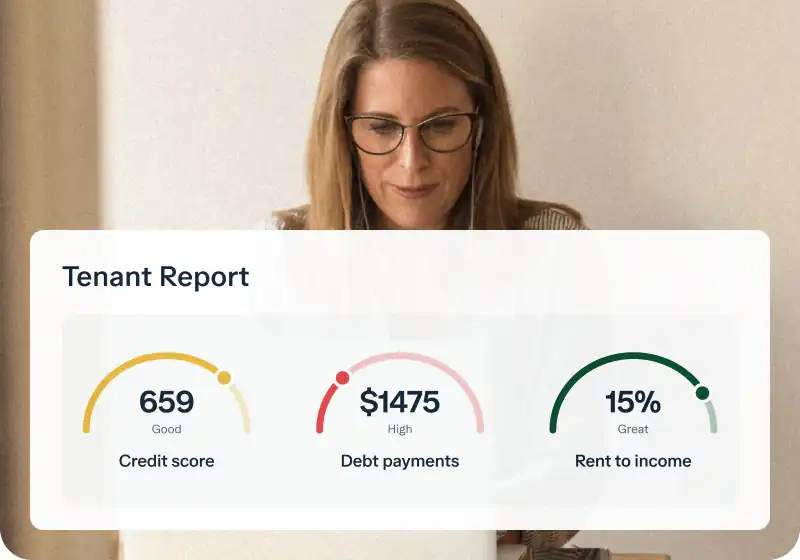Owning rental property offers significant potential for income and wealth building, but it also comes with inherent risks. Successfully navigating the challenges of property management requires a proactive approach to identify, understand, and minimize potential pitfalls. Protecting your investment in 2025 means staying informed and implementing smart strategies.
Key takeaways
- Thorough tenant screening is the first line of defense against many issues.
- A well-drafted lease agreement is crucial for setting clear expectations and legal protection.
- Adequate landlord insurance coverage transfers risk related to property damage and liability.
- Implementing sound financial practices and using appropriate technology are essential for operational efficiency and risk reduction.
- Staying compliant with ever-changing landlord-tenant laws is vital to avoid legal challenges.
Core risks of rental property ownership
As a rental property owner, you face various risks that can impact your investment's profitability and stability. These challenges span tenant interactions, financial health, property condition, legal compliance, market forces, and operational efficiency. Recognizing these risks is the first step toward effective mitigation.
Tenant-related challenges
Tenants can pose risks such as late or non-payment of rent, causing property damage beyond normal wear and tear, or engaging in disputes. These issues can lead to significant financial losses and legal complications for landlords. Resolving tenant-related problems effectively protects your income stream and property value.
Financial vulnerabilities
Managing finances involves risks like extended vacancy periods that halt income flow or unexpected repair expenses that strain cash reserves. Property owners must also navigate market dynamics affecting rent prices and potential increases in operating costs. Building financial resilience helps absorb these unpredictable shocks.
The US rental market vacancy rate was 6.9% in Q3 2024, indicating potential income gaps for landlords if properties sit empty for extended periods. Proactive financial planning and efficient expense tracking are key to maintaining positive cash flow.
Property damage & maintenance issues
Property risks include damage from tenants, natural disasters, or simply the natural aging process of a building. Neglecting regular maintenance can lead to more significant, costly repairs down the line and potentially create unsafe living conditions. Proactive maintenance protects your asset's value and ensures tenant safety.
Tenant-caused damage and loss of rent account for roughly 50% of landlord insurance claims. This highlights the significant financial exposure from tenant-related property issues.
Navigating legal and compliance complexities
Landlord-tenant laws vary significantly by state and locality and are subject to change. Non-compliance with regulations regarding leases, evictions, safety standards, or fair housing can result in hefty fines and legal battles. Staying updated and ensuring all practices are legally sound is critical.
In 2025, 17% of landlords found compliance with new tenant protections and local regulations challenging. This statistic underscores the ongoing need for landlords to actively monitor legislative changes impacting their operations.
Market volatility and economic shifts
Broader economic conditions and local market trends can impact rental demand, property values, and rental rates. Factors like interest rate changes, job market fluctuations, or shifts in neighborhood demographics introduce market risk. Understanding market dynamics helps inform investment and pricing strategies.
The national median rent for a two-bedroom unit was $1,906 in Q3 2024, representing a 3.2% increase year-over-year. While many landlords increased rents in 2024 (85%), with nearly one-third raising them by 6-10%, market conditions can shift, affecting rent growth potential.
Operational Hurdles and Technology Adoption
Managing properties involves numerous operational tasks, from rent collection and maintenance coordination to bookkeeping and tenant communication. Inefficient processes can lead to mistakes, wasted time, and increased risk. Adopting appropriate technology can streamline operations but comes with its own set of challenges, such as initial cost and learning curves.
35% of landlords cite cost as a major barrier to adopting property management technology. However, failing to leverage technology can leave landlords exposed to risks associated with manual errors and inefficient workflows.
Essential strategies for reducing rental property risks
Mitigating risk isn't about eliminating it entirely, but about implementing strategies that reduce your exposure to potential problems. By taking deliberate steps in key areas of your rental business, you can build a more secure and profitable investment. Let's explore the essential strategies.
Implementing a rigorous tenant screening process
Effective tenant screening is arguably the most critical step in preventing tenant-related risks. A thorough process helps you identify applicants who are likely to pay rent on time, take care of the property, and be good neighbors. This significantly reduces the risk of late payments, property damage, and legal disputes.
Screening should include checking credit history to assess financial responsibility, verifying income to ensure affordability, conducting background checks for criminal history, and contacting previous landlords for rental history. Platforms can help automate and standardize this process, providing a clearer picture of potential tenants. Understanding renting to tenants with bad credit requires evaluating their overall application beyond just the credit score.
Drafting an air-tight lease agreement
A well-written lease agreement is your primary legal document outlining the terms and conditions of the tenancy. It should clearly define rent payment procedures, rules regarding property use, maintenance responsibilities, and grounds for eviction. A comprehensive lease protects both landlord and tenant by setting clear expectations.
Consulting with a legal professional or using customizable, state-specific templates can help ensure your lease agreements are legally sound and cover all necessary clauses. A strong lease is a critical tool for resolving disputes and taking legal action if necessary.
Securing comprehensive landlord insurance
Standard homeowners' insurance does not cover rental properties. Landlord insurance is specifically designed to protect against risks unique to rental ownership. It typically covers property damage due to covered perils, liability claims if someone is injured on the property, and often includes loss of rental income if the property becomes uninhabitable due to a covered event.
Tenant-caused damage and loss of rent represent a significant portion of insurance claims. While landlord insurance covers damage to the structure, encouraging your tenants to get contents insurance for renters can protect their belongings and potentially cover damage they cause to the unit.
Proactive property maintenance and inspections
Regular inspections and proactive maintenance prevent minor issues from becoming expensive problems. Addressing repairs promptly keeps tenants happy, preserves the property's value, and reduces the risk of accidents or safety hazards that could lead to liability claims. Schedule routine checks of the property's condition, systems (HVAC, plumbing, electrical), and structure.
Creating a maintenance schedule and budget helps anticipate costs and ensures repairs are handled efficiently. Addressing tenant maintenance requests quickly and documenting all work performed is also crucial for good tenant relations and risk management.
Sound financial management and contingency planning
Effective financial management is key to weathering unexpected costs and income gaps. This includes setting accurate budgets, tracking all income and expenses meticulously, and maintaining a reserve fund for emergencies. Having a financial cushion prevents you from being caught off guard by costly repairs or vacancies.
Using specialized accounting for Airbnb or long-term rental property bookkeeping tools helps landlords accurately categorize income and expenses, which is essential for tax preparation and financial analysis.
Collecting and managing how to collect security deposits correctly is also a critical part of financial and legal compliance. Accurate records support your landlord's guide to taxes and provide insights into your investment's performance.
Implementing clear procedures for receiving rent payments and tracking arrears is vital. Leveraging tools that provide real-time cash flow insights helps you monitor the financial health of your portfolio.
Establishing legal protection for your assets (e.g., LLC)
Separating your personal assets from your rental property business assets is a fundamental risk mitigation strategy. Forming a legal entity, such as a Limited Liability Company (LLC), is a widely recognized way to limit personal liability multiple SERP results]. This means that in case of a lawsuit related to your rental property, your personal assets are generally protected.
Consulting with a legal and financial advisor can help you determine the most appropriate legal structure for your specific situation and portfolio size. While an LLC adds a layer of protection, it does not replace the need for adequate insurance.
Strategic market analysis and investment diversification
Understanding your local rental market is crucial for setting competitive rent prices and minimizing vacancy risk. Researching comparable rental rates, vacancy trends, and economic indicators in your area helps you make informed decisions. Analyzing factors like the demand for student-friendly neighborhoods or family housing can guide acquisition or pricing strategies.
Diversifying your investment portfolio across different property types or geographic locations can also spread risk. While this may be more applicable to larger portfolios, even owning different types of units (e.g., single-family vs. duplex) in the same market can offer some diversification benefits.
Leveraging technology for risk mitigation and efficiency
Modern property management technology offers powerful tools to automate tasks, improve accuracy, and enhance communication, all of which contribute to risk reduction. While the initial cost might seem like a barrier to some landlords, the long-term benefits in saved time, reduced errors, and better data management can far outweigh the expense. Integrated platforms are particularly effective.
Rental billing software, for example, automates invoicing, sends payment reminders, and tracks payments, significantly reducing the risk of late or missed rent. Tenant management software helps streamline communication, store tenant information securely, and manage maintenance requests efficiently.
Integrated landlord property manager software or advanced property management platforms often combine these features with bookkeeping and financial reporting tools.
A platform like Baselane offers integrated banking, rent collection, and bookkeeping features designed for landlords. You can set up unlimited accounts to organize finances by property, automate rent collection with reminders and late fees, and automatically categorize transactions for easier bookkeeping and tax reporting. This integration simplifies operations, reduces manual errors, and provides clear financial visibility, empowering you to make data-driven decisions to identify and mitigate risks.
Monitoring legal changes and market trends
The regulatory landscape for landlords is constantly evolving, with new tenant protections and local ordinances being introduced. Staying informed about these changes is not just good practice; it's essential for legal compliance and avoiding costly mistakes. Regularly checking state and local government websites or subscribing to landlord associations and legal update services can help you stay current.
Understanding proper legal procedures for communicating with tenants is also vital. This includes knowing how to issue a proper [notice to pay rent] or quit, drafting a lease termination letter when necessary, and following the correct steps for a notice to vacate. Using resources and tools that incorporate current legal requirements can help ensure your actions are compliant. The challenge many landlords face with compliance highlights the importance of reliable information sources.
Bottomline
Successfully managing rental properties in 2025 requires a commitment to proactive risk mitigation. By implementing strategies like rigorous tenant screening, utilizing strong lease agreements, securing proper insurance, maintaining properties diligently, practicing sound financial management, establishing legal protections, and leveraging technology, you significantly reduce your exposure to potential problems. These steps not only protect your investment but also streamline your operations, saving you time and reducing stress.
Tools designed specifically for rental property owners, such as integrated financial and property management platforms, can be invaluable partners in this effort.
They help automate critical tasks like rent collection and bookkeeping, provide essential financial insights, and contribute to overall operational efficiency, enabling you to focus on growing your portfolio and maximizing your passive income. Taking control of your rental property risks empowers you to build a more secure and prosperous real estate business.
FAQs
What are common rental property risks?
Common risks include tenant issues like non-payment or property damage, financial challenges such as vacancies and unexpected expenses, legal compliance errors, physical property damage, market fluctuations, and inefficient operations. Addressing these areas systematically helps protect your investment.
How does tenant screening mitigate risk?
Thorough tenant screening helps landlords select responsible tenants by verifying income, checking credit history, conducting background checks, and reviewing rental history. This process significantly reduces the likelihood of issues like late rent payments, property damage, and legal disputes.
Why is landlord insurance necessary?
Landlord insurance protects property owners against specific risks associated with rentals, including damage to the property itself, liability claims from tenant or visitor injuries, and potential loss of rental income if the property becomes uninhabitable due to a covered event. Standard homeowners insurance does not provide this specialized coverage.
Can technology help reduce landlord risks?
Yes, property management technology can automate tasks like rent collection and financial tracking, reducing manual errors. It can also improve tenant screening processes, enhance communication, and provide valuable data insights, all of which contribute to identifying and mitigating potential risks more effectively.
What legal risks do landlords face?
Landlords face legal risks related to non-compliance with federal, state, and local landlord-tenant laws, including fair housing regulations, proper procedures for lease agreements, security deposit handling, and eviction processes. Staying informed about these laws is crucial to avoid fines and lawsuits.
















.jpg)